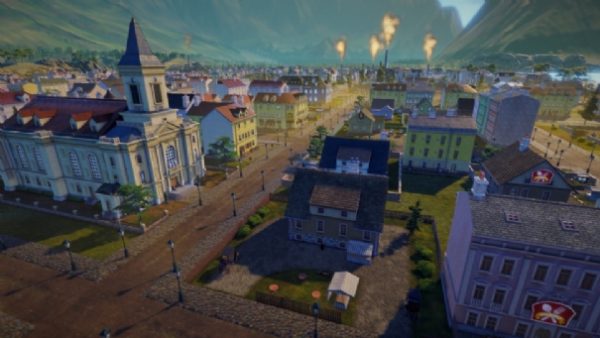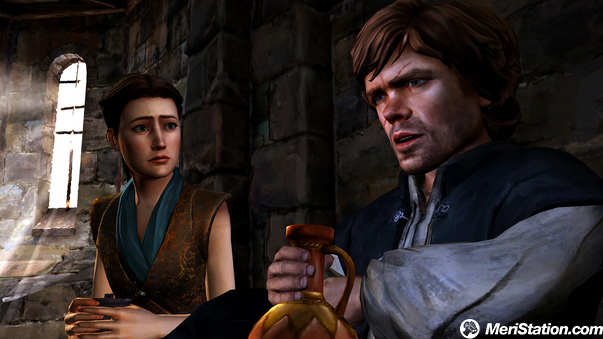The story is us
But what would this loophole be? Simple: Urban Empire is a city builder other than the others, where the player has the task, as well as to grow and prosper urban settlement, also to manage every aspect of the community’s political and social life, dressing the role of the first citizen . Reborn Interactive has developed a multifaceted title and best describes what it is, r
ebuilding the pedigree tree and retrieving all the titles and genres it has drawn. The first source of inspiration could only be the Tropico series , with which Urban Empire shares the same producer, Kalypso Media. Beyond self-censorship and internal joke,
just like the Generalissimo of the tropical island, the protagonist ofUrban Empire is not the usual invisible demiurge seen in all the other city builders, an extraterrestrial entity that, out of the world, with his hand from above moves streets and p
alaces. In contrast, the protagonist of Urban Empire is a “real” character, descended from one of the four families available at the start of the ga
me, such as the Von Pfilzens, an aristocratic and traditionalist race, or the Kilgannons, a family of hard workers and defenders of rights of the latter. Every character, just like inCrusader Kings , has its peculiar features, which give rise to bonus
or malus with obvious relegation to the city, and which dynamically change during the game, especially in the transition from one generation to the next.The family is thus included in History and lives along with its city some of the events t
hat have marked the path of man from 1820 until 2023 . The contextualization of the events is one of the most distinctive elements of Urban Empire from other city builders, where the city was usually a kind of utopia, detached from reality and out of time.
Arms with knowledge
Urban Empire recreates and revives the historical stages of the last two centuries through casual events, where the user, dressed as a mayor
, has to decide, for example, whether to support the abolition of child labor, trade union struggle or women’s political rights. The historical
context is also dictated by the various law proposals coming from the other parties that, according to their deployment, will bring to the agenda of the municipal council proposals such as prohibition of pr
ostitution or stricter rules on the sale of tobacco. Finally, the newspapers are telling us about everything that happens around our city, th
e events of the Austro-Hungarian Empire we initially do, but also news from America and other parts of the continent, such as the wars,
The true guide to the historical process is, however, the broad tree of technologies that both visually and structurally rem
ind you of the various civilization proposals . The two hundred years of history of Urban Empirehave been divided into five eras, each of which is associated with various technological advances and scientific discoveries, giving rise to new structur
es to be placed in the city, new laws to promulgate, or more profitable industries and forms of trade. This is followed by inventions such as telegraph or gas use, thanks to which the advent of newspapers and road lighting is to come to all that we live in these years, such as the “discovery” of the internet, the increasingly
intrusive presence of social media or the use of increased reality. Compared to what Firaxis proposed in Civilization, Reborn Interactive has preferred to encompass all fields of knowledge, but also civil and social progress, into a single technology tree, wh
ich is so very branched and profound, but at the same time unclear and sometimes dispersive. The tightness of the interfaces is actually a problem that goes through long and wide Urban Empire, where decisions are often taken without knowing what the consequences will be. A gift comes to the city for a blade and we decide to accept it and the effects are an increase in the happiness of the population but a decrease
in security. Because? We do not know, there was no warning to tell us about the effects. This is just one of the many examples, perhaps even the
least critical, because the real problem is when this uncertainty envelops decisions in the economic field, already in itself very cryptic and unclear as we will see later. Finally, we note that Urbane Empire does not enjoy any translation into Italian and that all the texts and the little talk are written and dubbed in English.
Simplified urban regulator plan
We started the article by describing Urban Empire as a city builder and it is strange to have arrived at this point without having even spent a row on building roads, sewers, or on the layout of high voltage jets or pipelines. The answer is soon said: all of these things we just listed simply do not exist, the mechanics in this field are really small to the bone and co
nsist mainly of creating polygons in which the new districts will rise. The latter are defined by the percentage of space dedicated to housing, industry and business, and from some key buildings such as theaters, churches, or schools. There wou
ld also be water pipes, electricity cables and gas grid, but they are invisible and only correspond to a barred box. We are therefore far from the careful planning needed in Cities: Skyline , forget the lost hours of searching for harmony among all parts of the city, but above all forget the breathtaking beauty of int
ricate complexes of streets and palaces, neon lights and green that is married with majestic skyscrapers in reinforced concrete and steel. In Urban Empireurban planning is reduced to a minimum and even visually, observing the urban complex bushes come on smoothly, with the united junctions in a small way and with the square squar
es that remind the old old IACP of Italy of the old century, it is not certainly the most satisfying experience. The rescue bailout is triggered by the change that the city has with the passing of the eras, a modest agglomeration of independent wooden houses, with hand-painted shops and smoky industries in the background, up to a set of mo
dern palaces flashy that we see in our metropolis. The pulsating heart of Urban Empire is not in the construction of the city, but in its political management, which closely resembles what is proposed by the Democracy series, in the dynamics between the parties and the mayor and how these mutilated at the passing of the eras. Any decision you want to take, this will not happen in a blast of clicks, but the proposal will be screened by the city council and the parties will decide whether or not to vote on the new law, building a new building or expanding the city.
In front of their features or leave, the user has various weapons available to make his or her own feelings, both more accusing and raising, spying, threatening, and forcing the assembly to raise his hand. But the stimuli do not only come from the virtual mayor, because the same parties are trying to influence each other, to feel their weight after the elections and to take votes at their own mill. From the third was on,
Urban Commissioner
Unfortunately, the political component is not, however, free of defects. At voting time, Urban Empire becomes a continuous routine of actions all the same to itself, especially when, advancing in the era, the number of parties grows and with it the time it takes to convince them to put a signature on the new school opening . There are also strange behaviors such as a leftist party opposed to a vote on women’s rights or for greater protection of workers, but it is the excessive burden on the economic side to break every dream of a better city.



